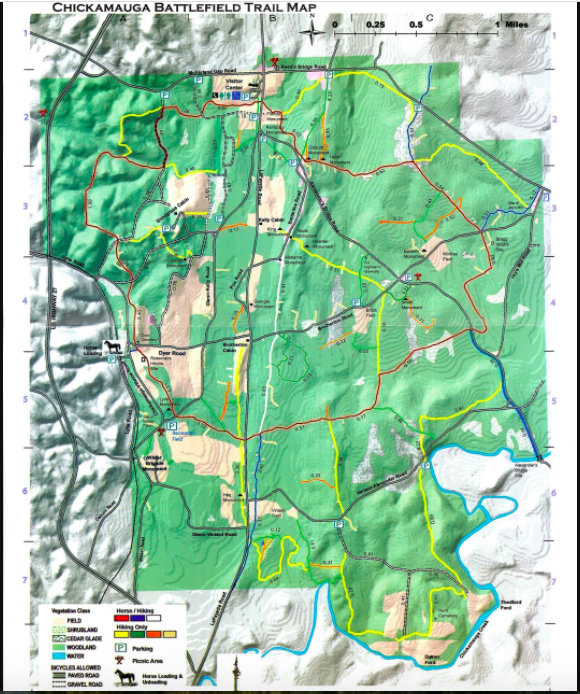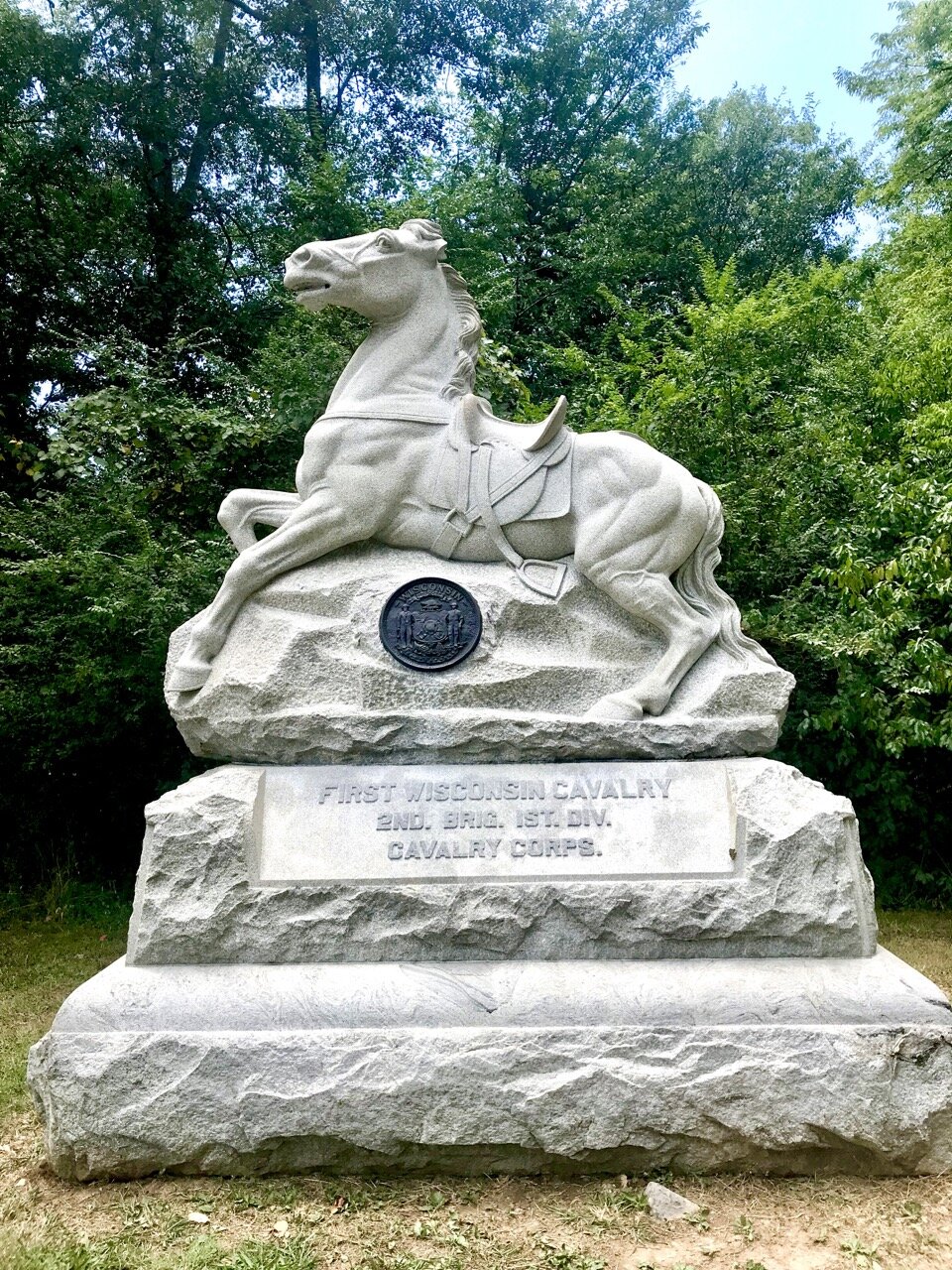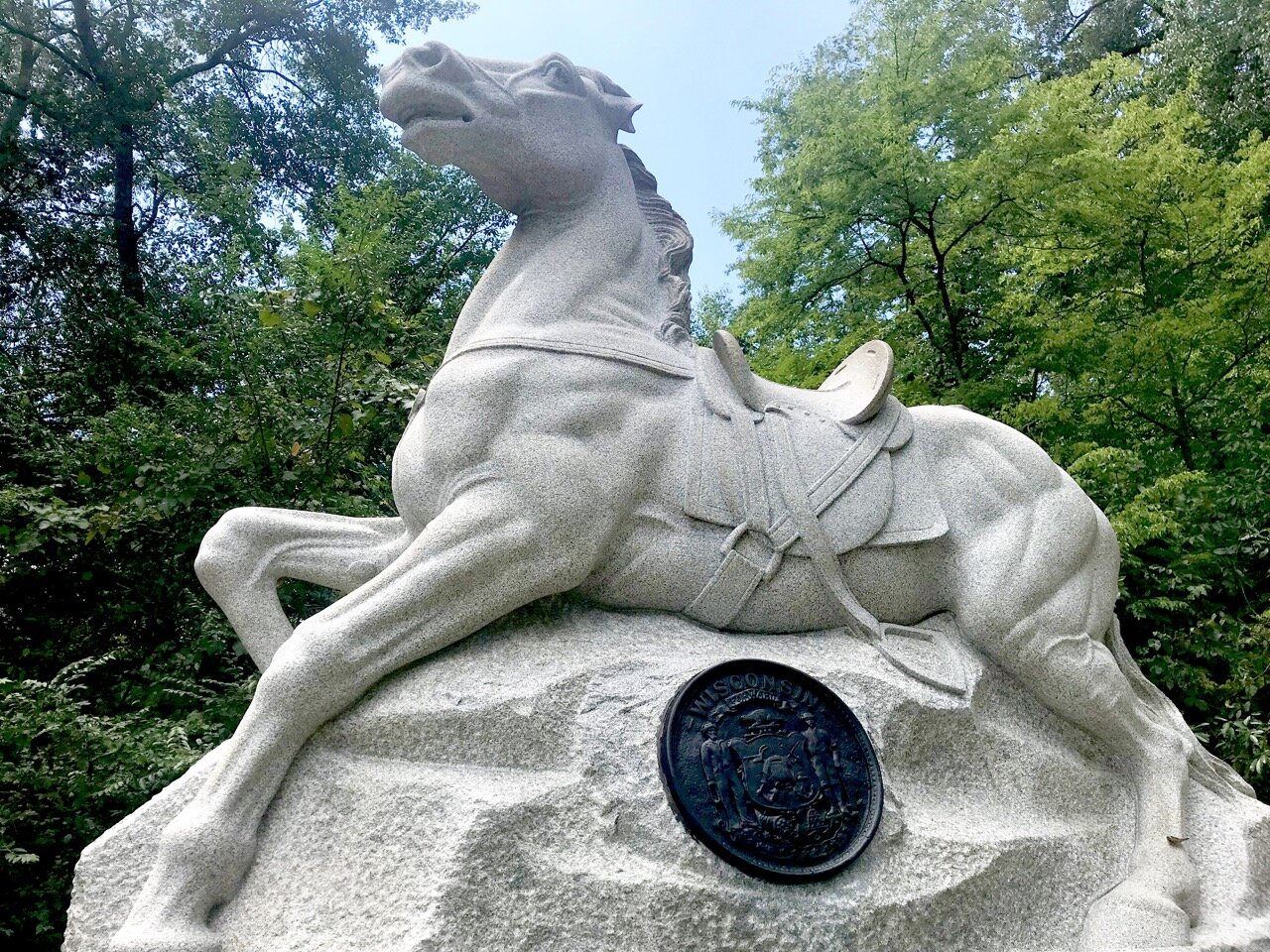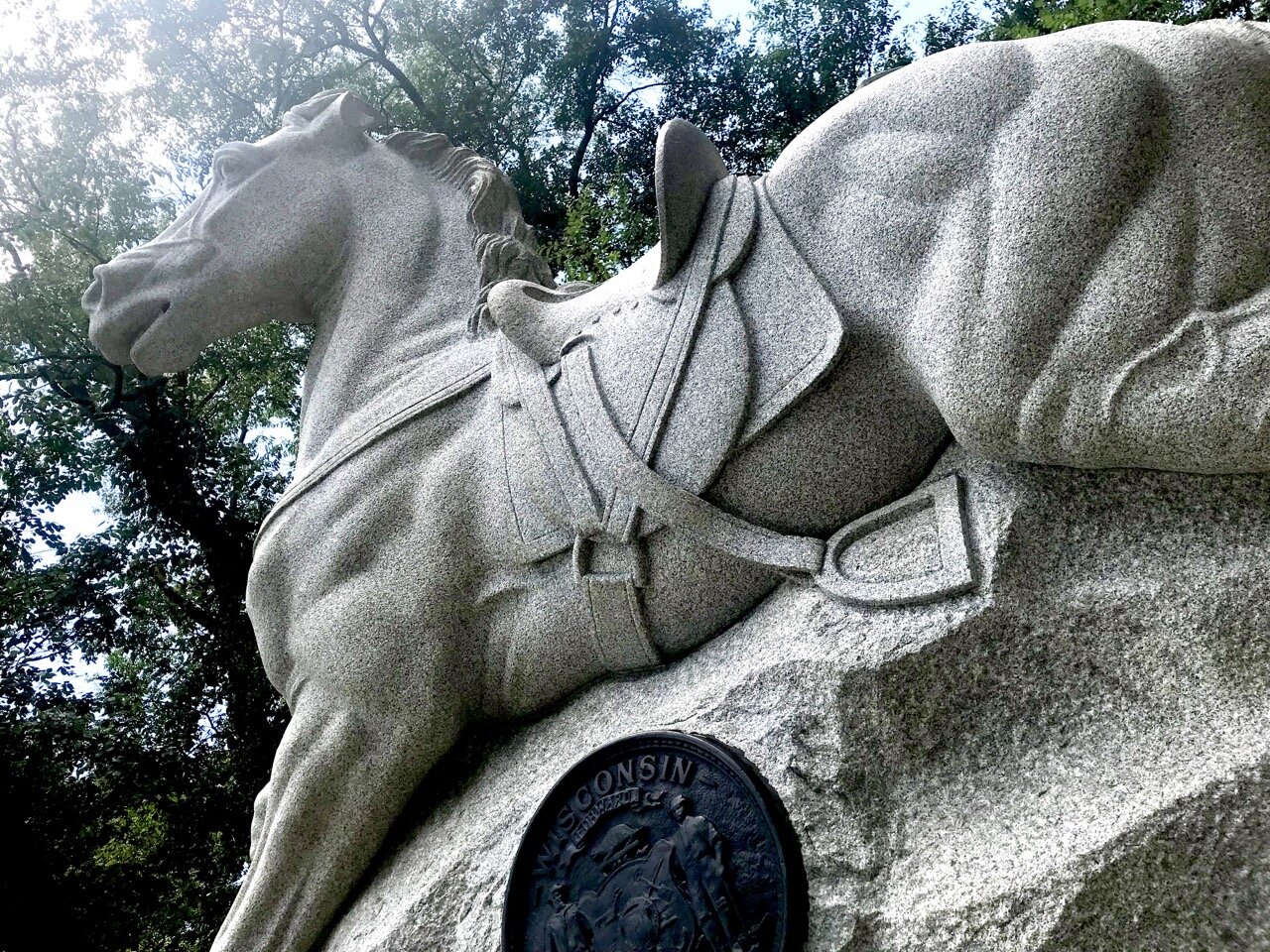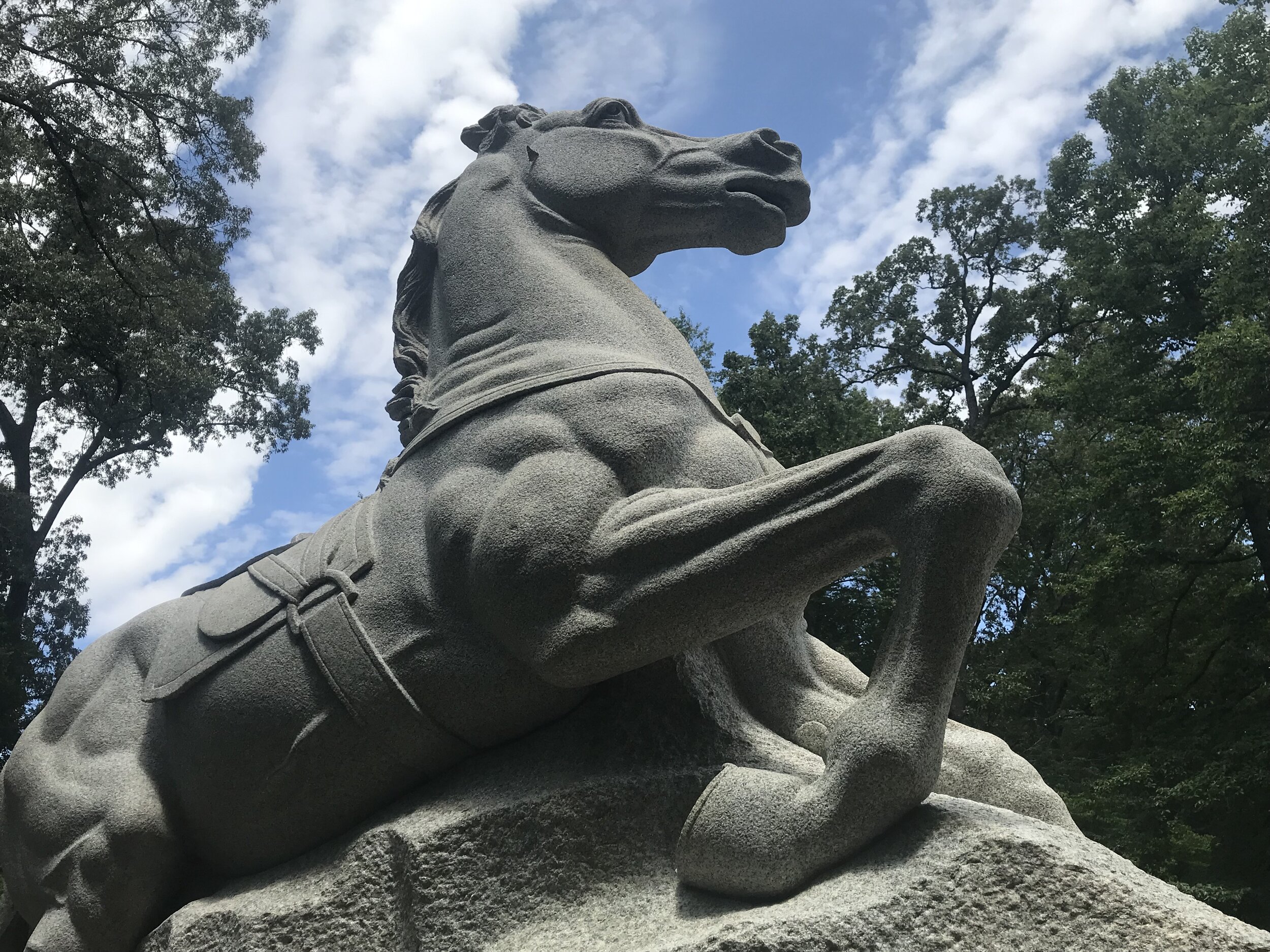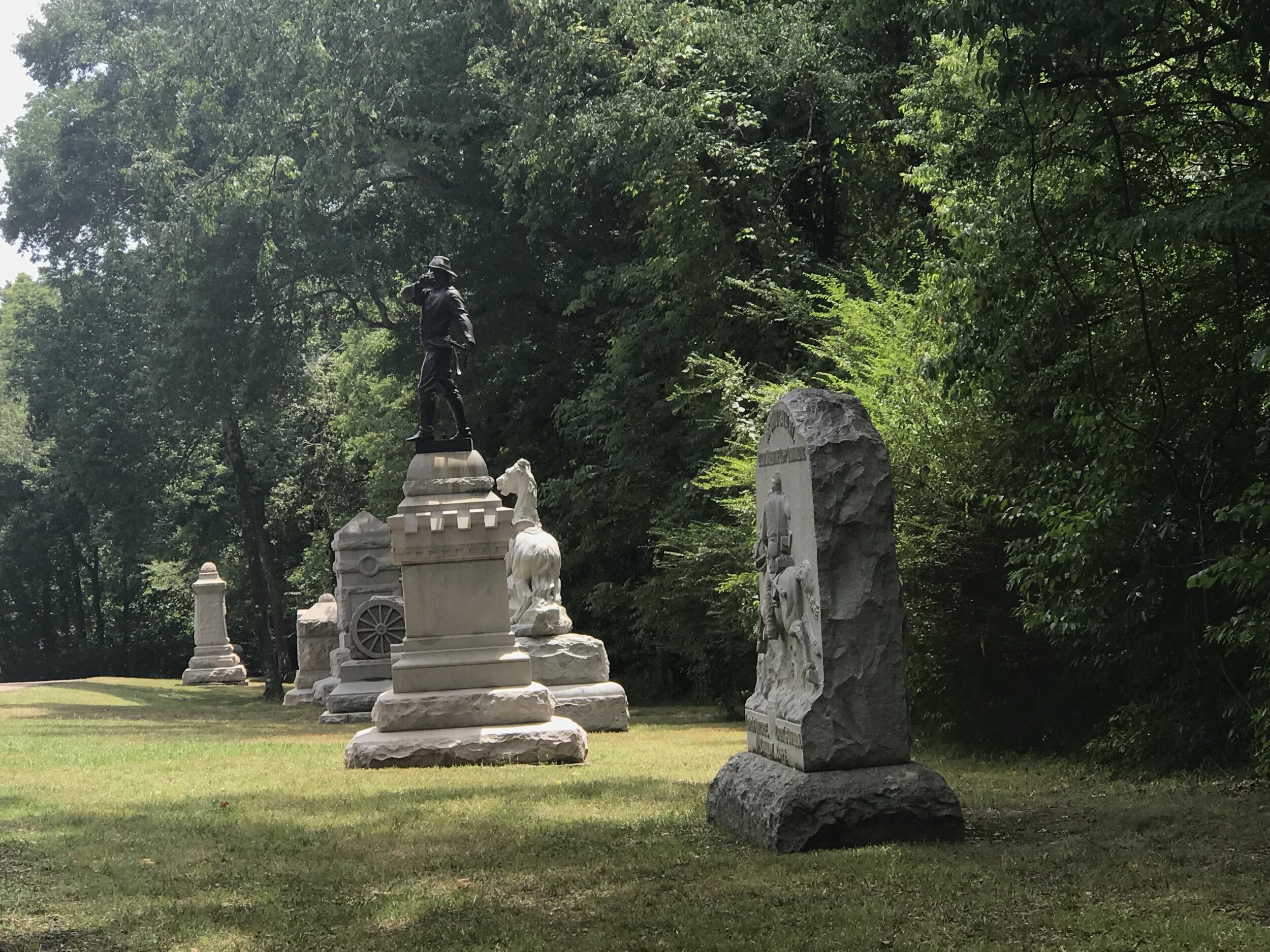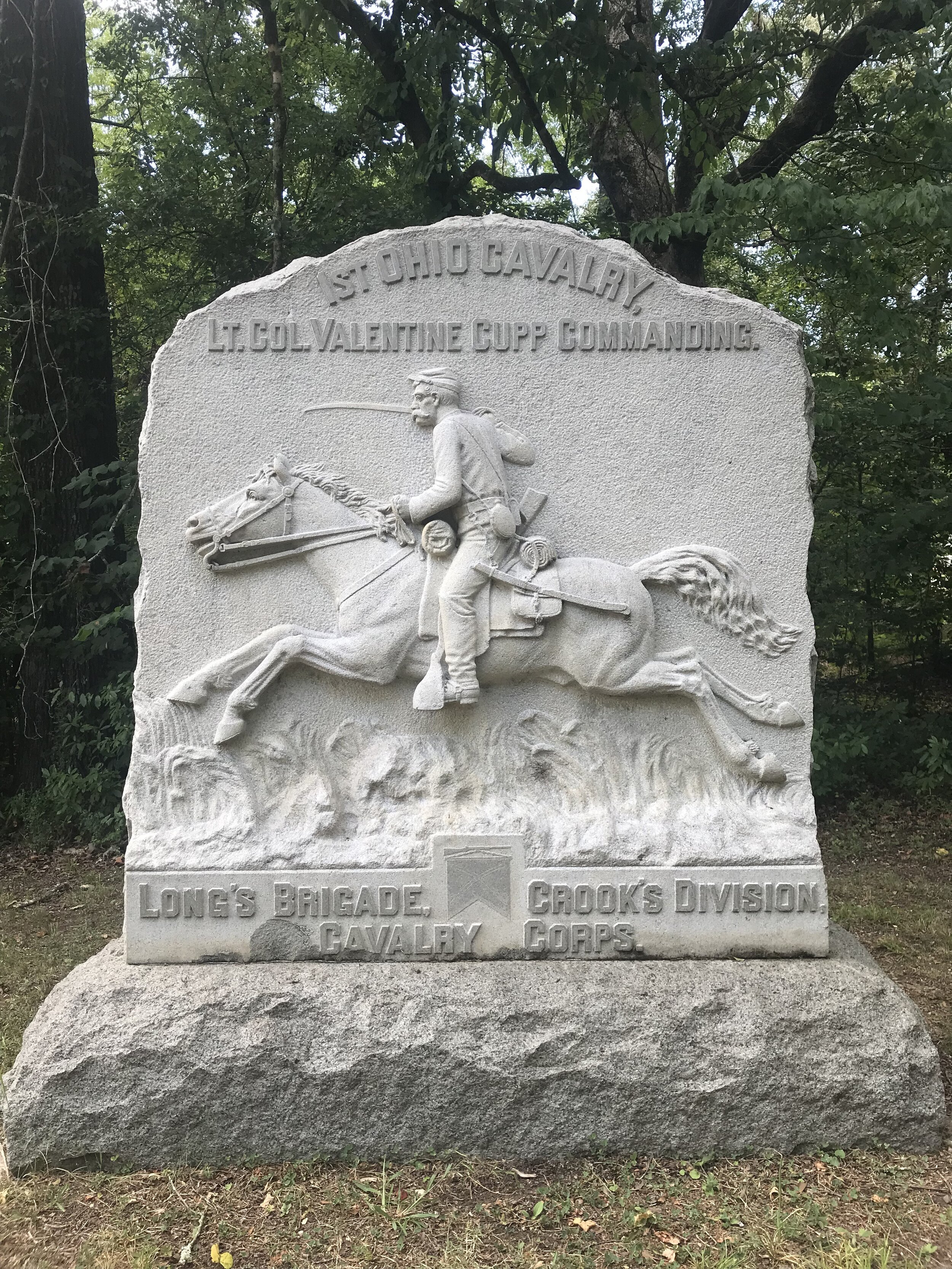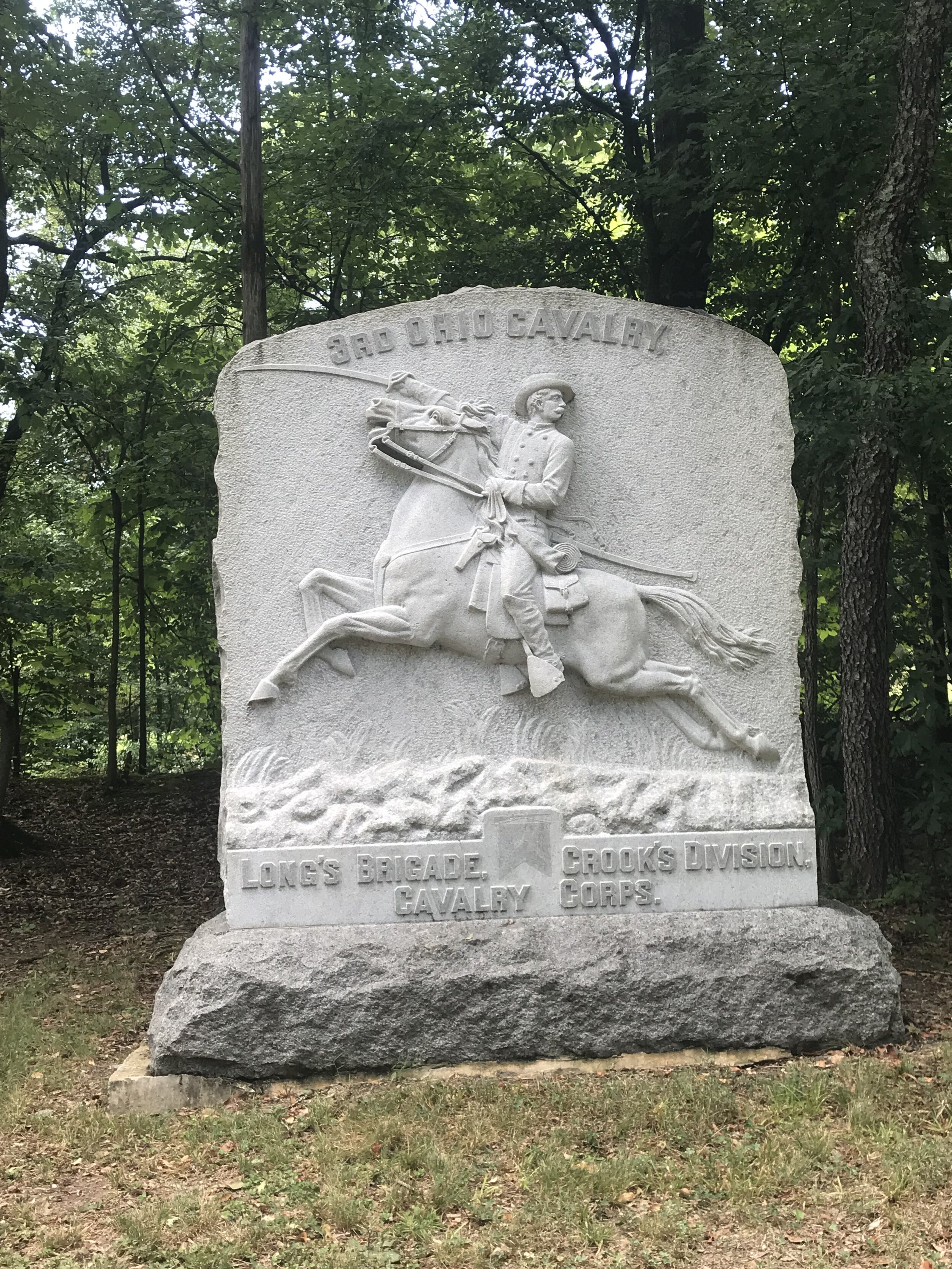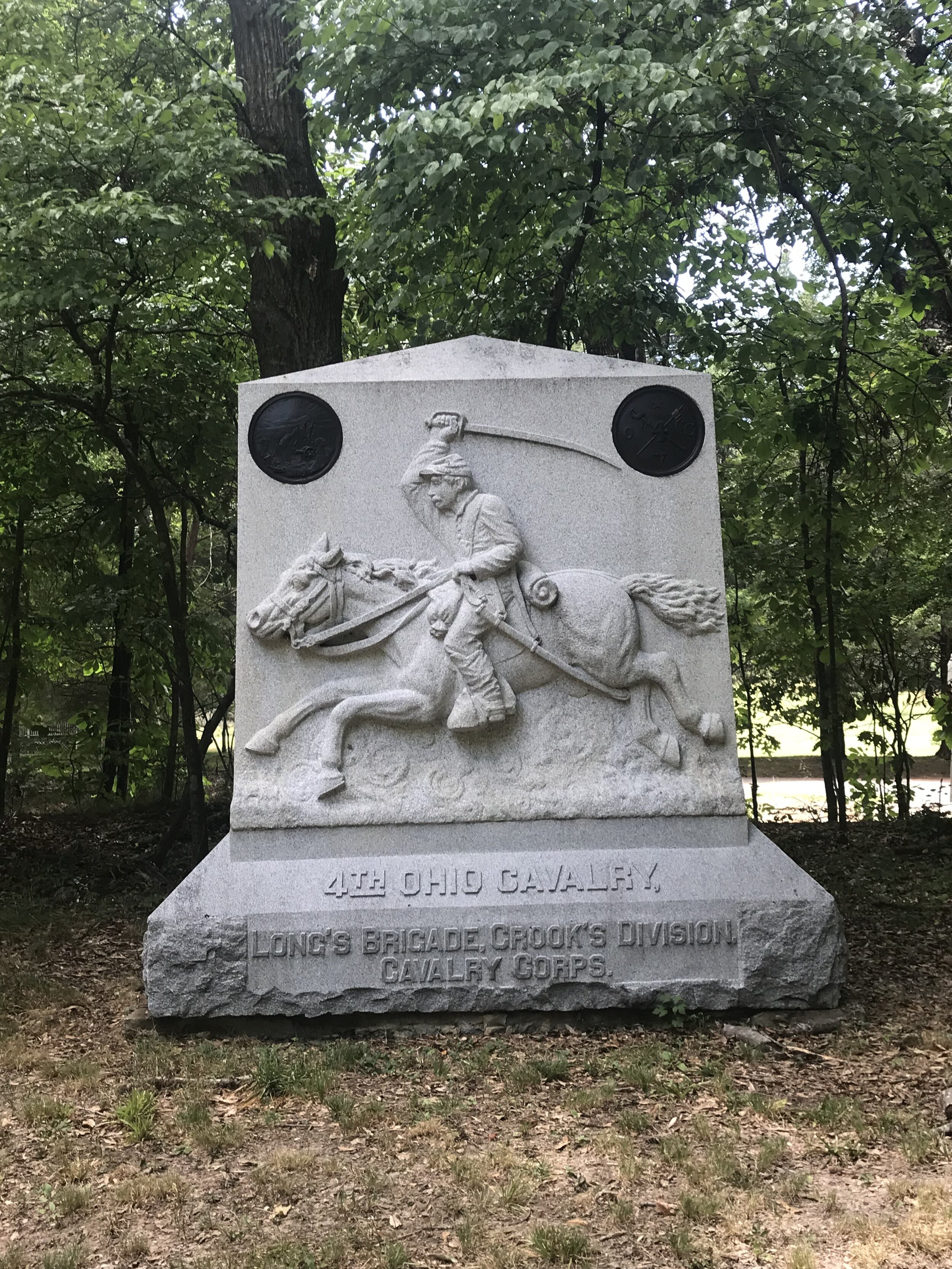For The Love of Horses and History
by Mary Barnett, Programs & Projects Manager, National Park Partners
Among the many ways we can recreate inside our National Park (biking, kayaking, canoeing, hiking, trail running…), horseback riding is a particularly unique way to not only connect to the forests and trails from a different vantage point, but to appreciate what horses endured during some of the most intense days of the battle here.
During the Campaign for Chattanooga, both Union and Confederate armies utilized thousands of horses to pull wagons, ambulances, and cannon, while mounted troops fanned the countryside scouting for their respective armies.
Detail from the monument to Pennsylvania’s 9th Veteran Cavalry. 1st Brigade. 1st Cavalry Division. Army of The Cumberland.
According to some historians, horses and their soldier-riders were bonded pairs more often than not. The two likely spent nearly all of their time together. Horses were given names and they knew their riders and counted on them. Ideally, the relationship was symbiotic in ways that can only develop between a human and a beloved animal over time. So when it was time to head into those violent woods, they trusted one another.
In fact, the cavalry from both sides were the ones that basically started the battle of Chickamauga, according to research that park guide, Brian Autry, shared with us. “On September 18, 1863, Minty's U.S. cavalry was defending Reed's bridge and Wilder's "Lightning Brigade" was defending Alexander's bridge. Minty's men were regular cavalry and Wilder's men were mounted infantry. Mounted infantry rode into battle dismounted and every fourth man took his and the other three men's horses and held them nearby so they were easily accessible.” (Wittenberg, Eric J. The Union Cavalry Comes of Age: Hartwood Church to Brandy Station, 1863. Brasseys, 2005.)
Today, a few of the trails at Chickamauga Battlefield and Lookout Mountains are open to horseback riders and provide several routes to enjoy short and long rides through the park.
Park volunteer and UTC adjunct history instructor, Richard Manion, has been riding his horse, Twister, in the Chickamauga Battlefield for more than two decades. He says Twister is steady and quiet and unbothered by the history that surrounds them but Manion never forgets that this place of peace and healing today was filled with sheer terror 157 years ago. As a horse owner, the casualties in animal loss is heartfelt.
“I think about the animals, the innocent perfect creation of a horse. It takes so much trust to build that relationship that peacetime horses let us do, let alone taking them into harm’s way. The horses didn’t have anything to do with this war, but went along because they trusted their rider,” he reflected.
The First Wisconsin Cavalry monument located behind Wilder Tower depicts a riderless horse and resonates with Manion.
The First Wisconsin Cavalry Monument in Chickamauga Battlefield
“It took me 16 years to really understand what was going on with that horse - look at his eyes - he’s trying to look behind him, the saddle is tilted to the left, his rider fell off. And when the horse realizes that he’s by himself his eyes are terror-filled,” Manion said.
Laura Finch believes her horses have picked up on some of that history on certain trails some days. Finch, a longtime supporter of the park, grew up with horses that she and her friends rode regularly inside the Chickamauga Battlefield as young girls.
“If you really know your horse you know when your horse’s attitude changes,” she said.
Finch recalls riding with her friends countless times to hang out in the fields below Wilder Tower with their horses on leashes. “It was a nice long ride, stomping through creeks and under bridges along the designated trails. But at some point in the woods the horses would pick up on some weird excitement in the air and it always made the ride a bit more exciting,” she said.
Stephanie and Ace (12) and Lincoln (14) discovered the Chickamauga Battlefield horse trails about 6 years ago. Now they live next to the park and are riding the trails all the time.
Sometimes just experiencing an extraordinary historic landscape while on horseback is enough to give you goosebumps. Stephanie Wilkins is a frequent visitor of the park and moved her horses, Lincoln and Ace, closer to Chickamauga so she could spend more time with them on the Battlefield trails. As an outdoor enthusiast who moved to the region to enjoy an active life, Stephanie said she considers the Chickamauga and Chattanooga National Military Park among the top outdoor amenities our area has to offer.
While simply having access to quick escapes into the National Park to recreate with her horses is something she says she is eternally grateful for, Wilkins says the landscapes draw you in a little deeper . “…You can think about something differently because these landscapes pull you into the story. I always stop and consider that, while I’m here enjoying the park for one reason, this place exists because of something else. You never forget where you are.”
Thanks to the work of the park’s resource management staff who are responsible for maintaining and preserving these magnificent and historically accurate landscapes throughout all six units of the park, these views are available to all of us.
This fall we hope to do a follow up to this post from inside the park, via horseback! Stay tuned.
Follow us on Instagram for some additional interview clips and pics!
Please note that the park does not have horses available for rent or public use.




